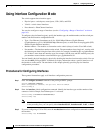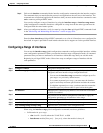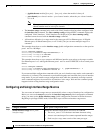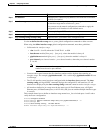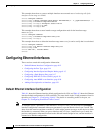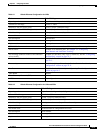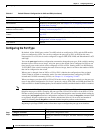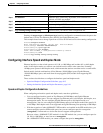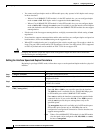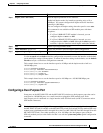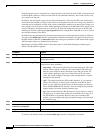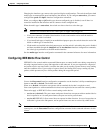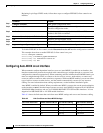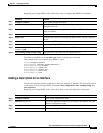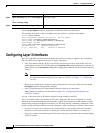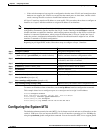
9-16
Cisco ME 3400 Ethernet Access Switch Software Configuration Guide
OL-9639-06
Chapter 9 Configuring Interfaces
Configuring Ethernet Interfaces
• You cannot configure duplex mode on SFP module ports; they operate in full-duplex mode except
in these situations:
–
When a Cisco1000BASE-T SFP module is in the SFP module slot, you can configure duplex
mode to auto or full. Half-duplex mode is supported with the auto setting.
–
When a Cisco100BASE-FX SFP module is in the SFP module slot, you can configure duplex
mode to half or full. Although the auto keyword is available, it puts the interface in half-duplex
mode (the default for this SFP module) because the 100BASE-FX SFP module does not support
autonegotiation.
• If both ends of the line support autonegotiation, we highly recommend the default setting of auto
negotiation.
• If one interface supports autonegotiation and the other end does not, configure duplex and speed on
both interfaces; do not use the auto setting on the supported side.
• When STP is enabled and a port is reconfigured, the switch can take up to 30 seconds to check for
loops. The port LED is amber while STP reconfigures. On the Cisco ME switch, STP is supported
on NNIs by default and can be enabled on ENIs. UNIs do not support STP.
Caution Changing the interface speed and duplex mode configuration might shut down and re-enable the
interface during the reconfiguration.
Setting the Interface Speed and Duplex Parameters
Beginning in privileged EXEC mode, follow these steps to set the speed and duplex mode for a physical
interface:
Command Purpose
Step 1
configure terminal Enter global configuration mode.
Step 2
interface interface-id Specify the physical interface to be configured, and enter interface
configuration mode.
Step 3
no shutdown Enable the port, if necessary. By default, UNIs and ENIs are disabled,
and NNIs are enabled.
Step 4
speed {10 | 100 | 1000 | auto [10 | 100 |
1000] | nonegotiate}
Enter the appropriate speed parameter for the interface:
• Enter 10, 100, or 1000 to set a specific speed for the interface.
The 1000 keyword is available only for 10/100/1000 Mbps ports
or SFP module ports with a 1000BASE-T SFP module.
• Enter auto to enable the interface to autonegotiate speed with the
connected device. If you use the 10, 100, or the 1000 keywords
with the auto keyword, the port autonegotiates only at the
specified speeds.
• The nonegotiate keyword is available only for SFP module ports.
SFP module ports operate only at 1000 Mbps but can be
configured to not negotiate if connected to a device that does not
support autonegotiation.
Note When a Cisco1000BASE-T SFP module is in the SFP module
slot, the speed can be configured to 10, 100, 1000, or to auto,
but not to nonegotiate.



